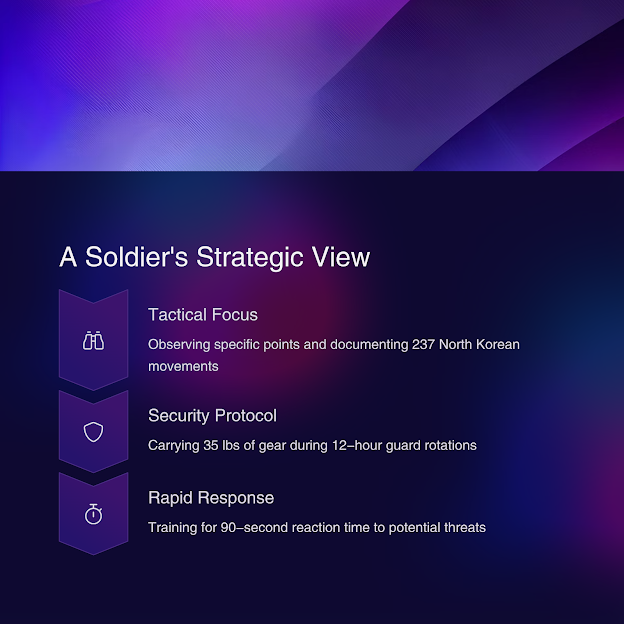I once saw the DMZ through night-vision goggles. Now I walk its perimeter as a tourist. The ground hasn’t changed—but I have.
First Encounter – From Duty to Discovery
My first view of the DMZ wasn’t through a tour bus window.
It was from behind reinforced glass, under red lights, with a loaded weapon slung over my shoulder.
As a Korean-American U.S. Army soldier, the DMZ was not a destination—it was a line.
A boundary to watch, a threat to assess, a location of unspoken tension.
Now, as a civilian living in Korea, I visit that same space with a camera and guidebook in hand.
But the weight of memory comes with me.
The DMZ as a Soldier – Strategic Focus and Security Protocol
In uniform, the DMZ was nothing poetic.
It was topography, range maps, satellite images, and endless briefings.
We studied infiltration routes, monitored activity, calculated distance to contact.
We didn’t talk about the families divided, or the ideological wound.
We talked about sectors, coordinates, and rules of engagement.
There was no room for reflection—only readiness.
The DMZ as a Civilian Tourist – Silence, Symbolism, and Stillness
Standing at Dora Observatory as a tourist,
I now see things I was trained to ignore.
The quiet. The barbed wire aging under wind.
The sheer absurdity of binoculars pointed at rice paddies across a border.
Tourists whisper, kids point, guides speak softly—
and the landscape does what it always has: sits in tense stillness.
It’s not a battlefield. It’s a pause.
Seeing the Same Fence Twice – Emotional Duality of Identity
As a Korean-American, there’s a strange echo walking the DMZ now.
I see it through two filters—military clarity and cultural ache.
The line that once separated "us" from "them"
now splits memory from meaning.
It’s hard to know what to feel when you see the same fence twice:
once as a soldier guarding it, once as a civilian trying to understand it.
But maybe that’s what dual identity always is—an overlap of mission and meaning.
Final Reflections – What the DMZ Means to a Korean-American Veteran Living in Korea
Living in Korea after military service is not a return—it’s a reintroduction.
And the DMZ is where that reintroduction feels most profound.
It reminds me that borders are not just physical.
They’re emotional, cultural, and sometimes invisible.
As both an American veteran and a Korean by heritage,
the DMZ is more than a symbol of division—it’s a mirror.
And I’m still learning what it reflects.






